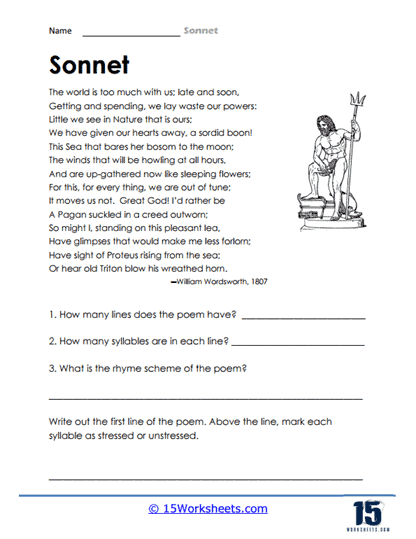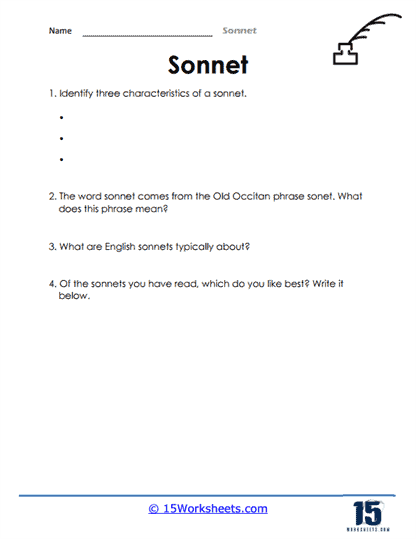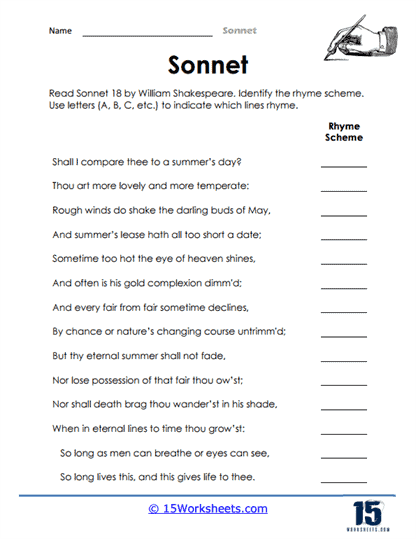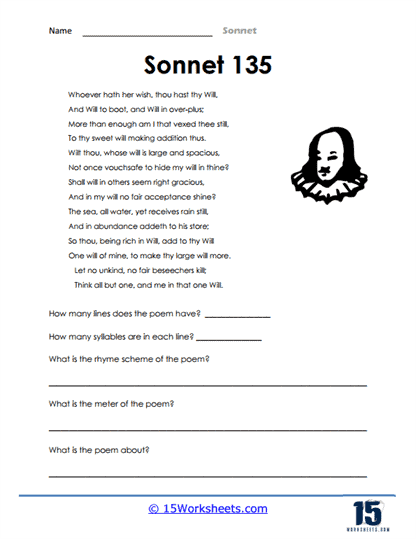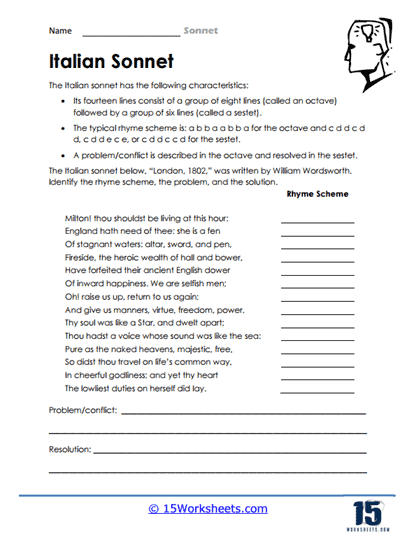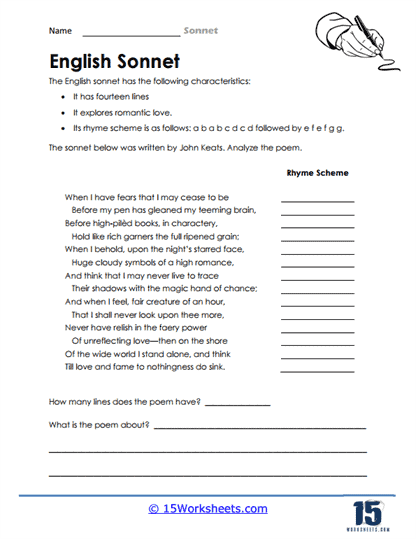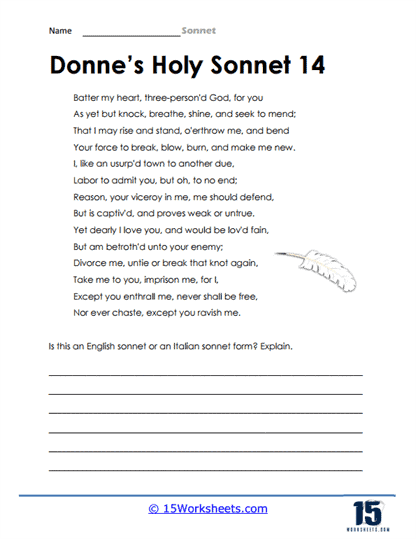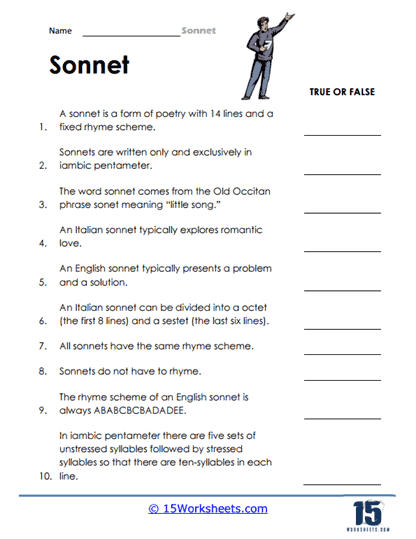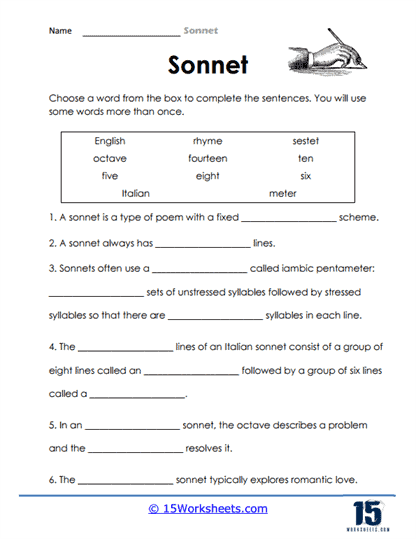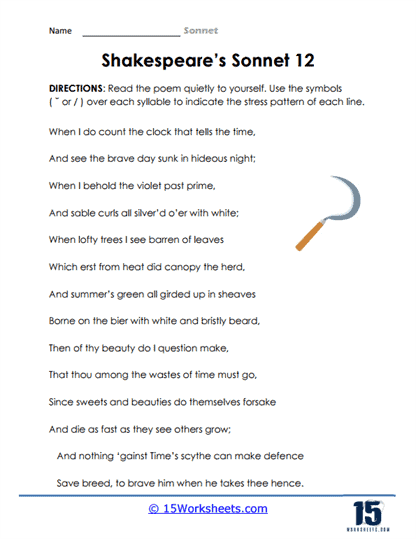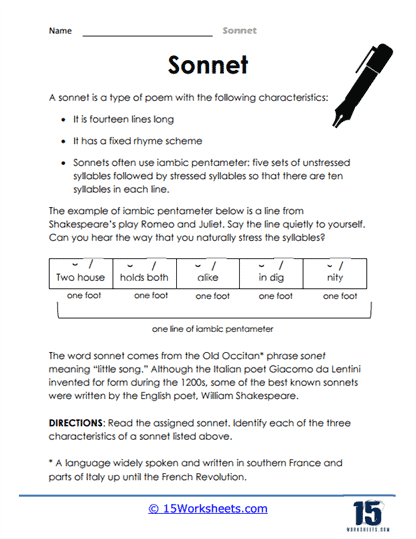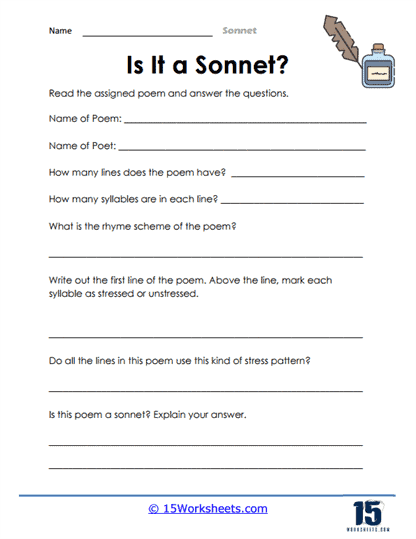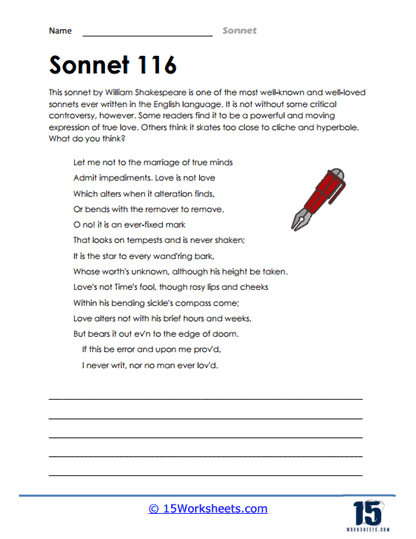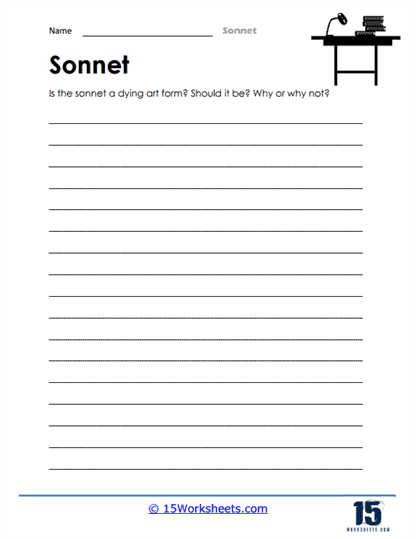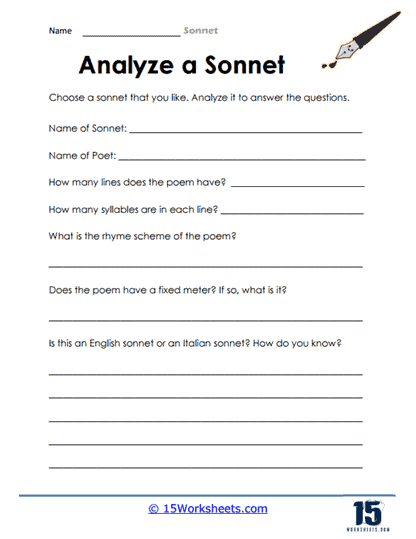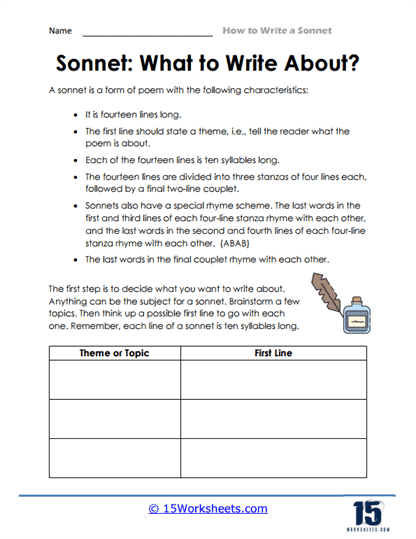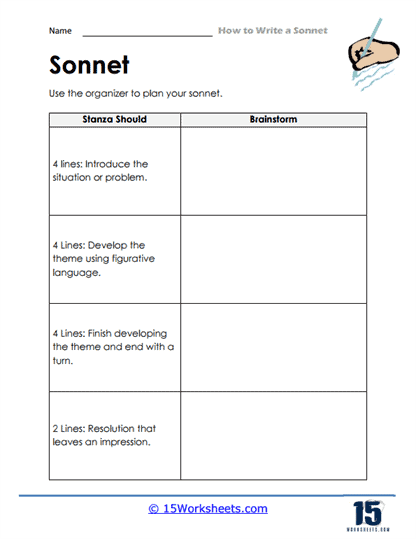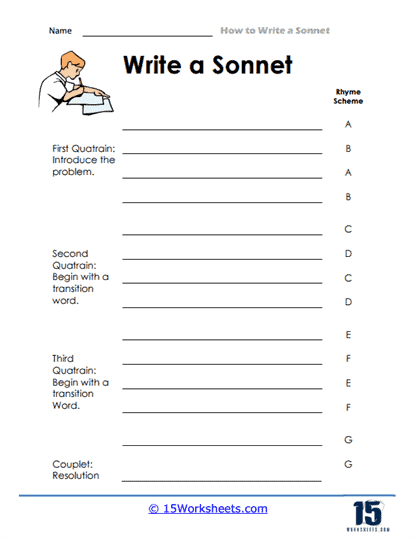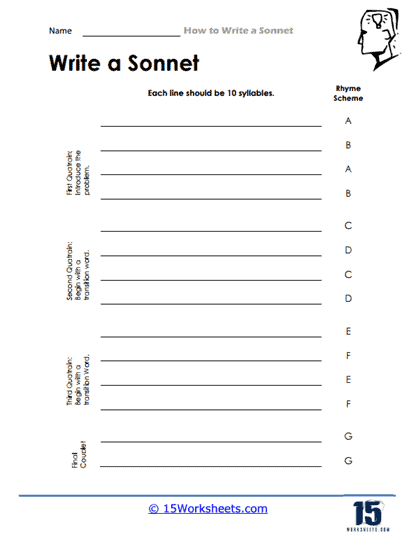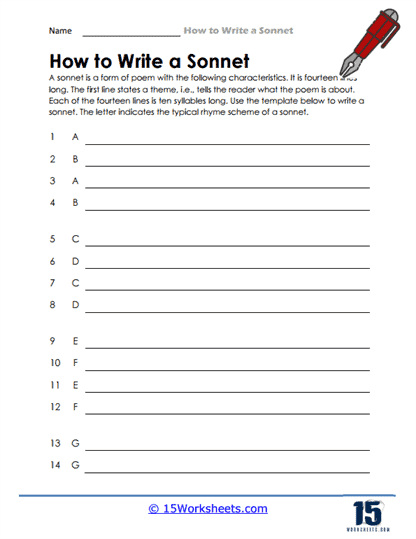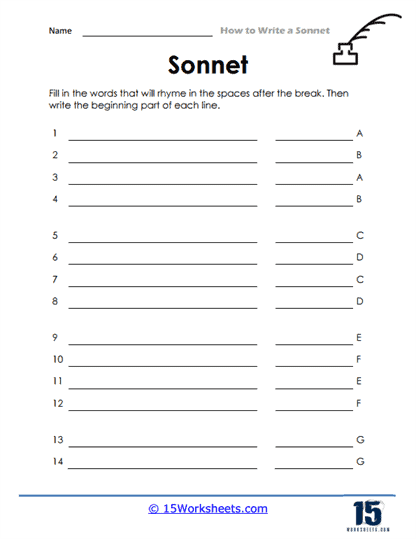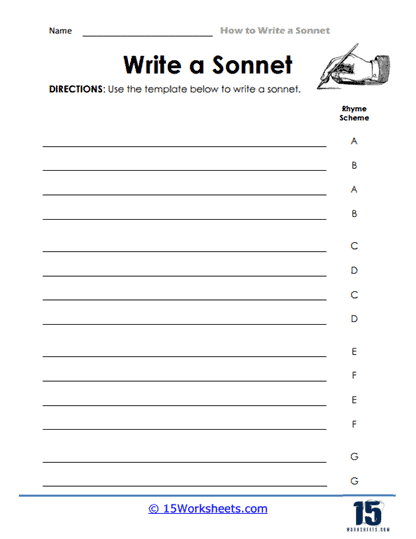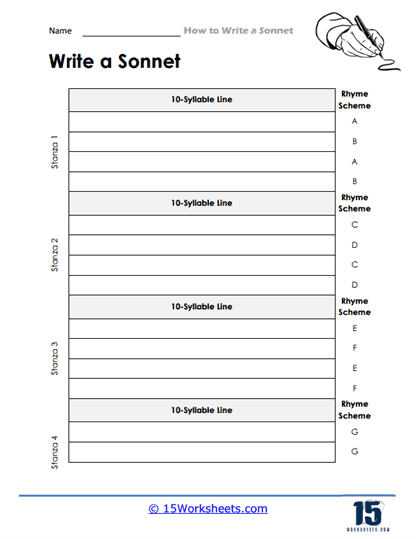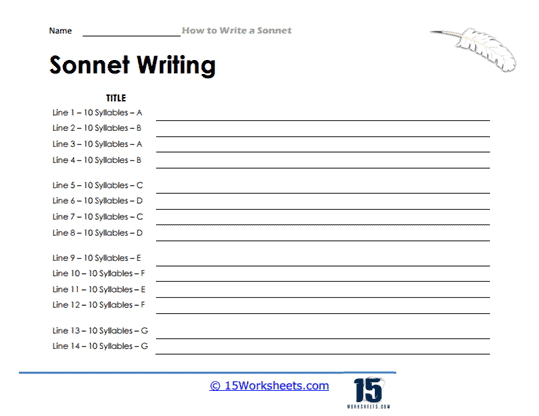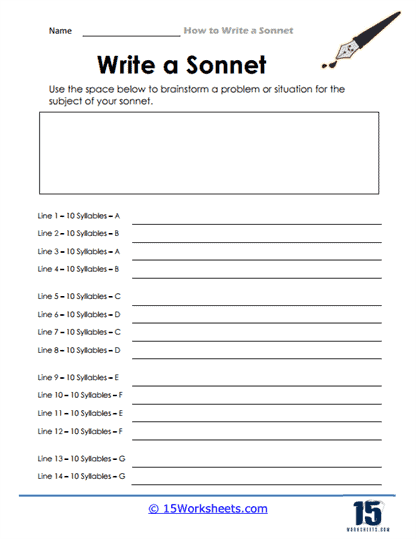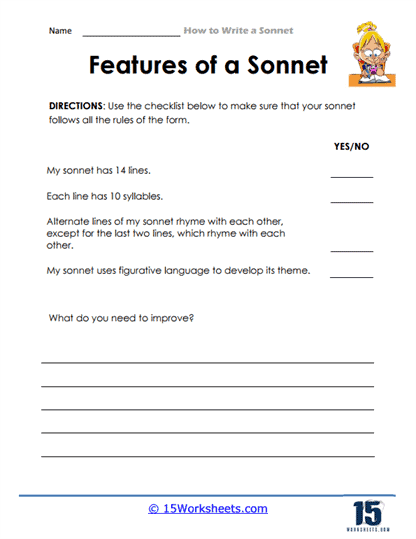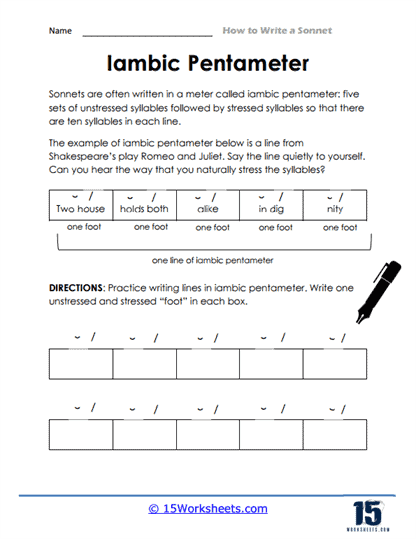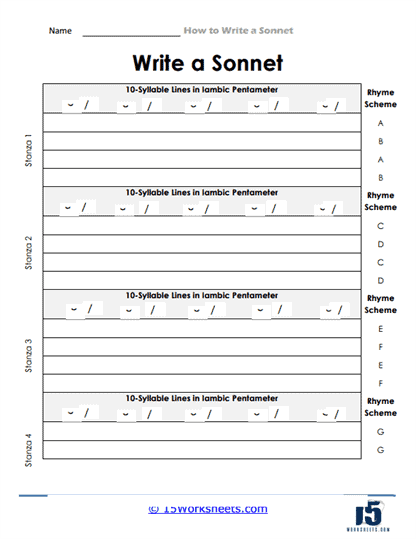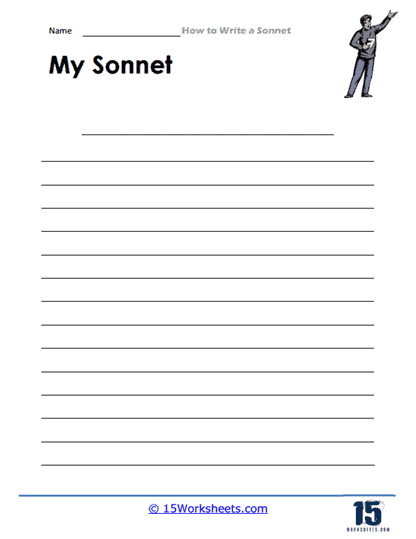Sonnets Worksheets
All About These 15 Worksheets
This series of worksheets on sonnets and sonnet writing is a comprehensive resource designed to introduce students to the beauty and structure of sonnet poetry. These worksheets provide students with the tools and guidance to explore and create their own sonnets, tapping into the power of language and rhythm to express their thoughts and emotions.
The exercises and writing prompts invite students to immerse themselves in the world of poetic expression, specifically focusing on the traditional sonnet form. Students also learn about the unique characteristics of sonnets, study renowned examples, and develop the skills necessary to compose their own sonnets. Through these worksheets, students will:
- Learn about the specific structure, rhyme scheme, and meter commonly associated with sonnets;
- Examine the poetic devices, imagery, themes, and emotions conveyed within renowned sonnets;
- Develop their ability to convey complex emotions and ideas within the limited space of a sonnet, fostering creativity and self-expression;
- Experiment with different themes, tones, and styles in creating their own sonnets, applying the structure and techniques learned throughout the series.
This series is suitable for students across different grade levels and can be integrated into language arts classes, creative writing workshops, or poetry units. By using these worksheets, teachers provide their students with a structured framework to explore the beauty and challenges of sonnet writing.
Through the varied exercises and writing prompts, students develop skills in poetic form, imagery, rhyme, meter, and self-expression. In summary, they encourage students to engage with language, rhythm, and emotion, allowing them to create sonnets that resonate with their readers and capture the timeless essence of poetry. This Sonnets and Sonnet Writing worksheets series unlocks the transformative power of the sonnet form, guiding students on a poetic journey of creativity, self-reflection, and literary exploration.
What Is a Sonnet in Literature?
A sonnet is a 14-line poem that consists of one stanza. The word “sonnet” was derived from the word sonetto in the Italian language, and it means “a song or a little sound.” It is a popular form of literature that several writers have used to craft poems. The most common type of sonnet in the English language is the Shakespearean sonnet, but there are many other types.
The Characteristics of a Sonnet
Before William Shakespeare, people used the word “sonnet” to describe any short poem. During the Renaissance era in Italy and Elizabethan England, sonnets gradually became a recognized form of poetry. They soon developed a characteristic of being 14 lines long, and they’re usually in iambic pentameter.
As the English language evolved, so did the different types of sonnets. That said, sonnets are used in different languages, too. Variations can be seen in their metrical arrangements and rhythmic schemes, but they’re all pretty much the same in many ways. Every sonnet has a thematic structure that consists of two parts.
One of them is the problem, and the other (you guessed it) is the solution. This could either be a proposition and then its reinterpretation or a question and then its answer. Writers limit themselves to 14 lines and then slowly unfold a two-part story that has gradually become a timeless way of arranging words.
You’re going to notice these three bold characteristics in all sonnets:
- They’re written in an iambic pentameter: this means that every sentence in a sonnet has 10 beats per line which are made up of stressed and unstressed syllables
- Every sonnet has 14 lines that are broken down into four quatrains (sections)
- A Shakespearean sonnet is renowned for having a strict rhyme scheme. For instance, CDCD or ABAB
A Sonnet’s Four Sections
As mentioned above, every sonnet is broken down into four different sections that are called quatrains. The first three have four lines, and all of them use an alternating rhyming scheme. On the other hand, the final quatrain only has two lines, and both of them rhyme. As you go through every quatrain, the poem progresses. Here’s how:
1. First quatrain: This is used to signify the subject of every sonnet. It has four lines, and the rhyming scheme is CDCD
2. Second quatrain: This section is used to build on the theme of the sonnet. It also has four lines, and the rhyming scheme is ABAB
3. Third quatrain: This section concludes the theme of the sonnet, and it has four lines, too. The rhyming scheme is GFGF
4. Fourth quatrain: This is the last section of the Shakespearean sonnet. This acts as the conclusion for the sonnet. It has two lines and a rhyming scheme of HH
Some of the most popular sonnets in the history of the English language were written by Shakespeare. These sonnets covered diverse themes such as death, infidelity, love, beauty, the passage of time, and jealousy. The first 126 sonnets he wrote are addressed to a single man, while the last 28 are addressed to a woman. One noticeable pattern in his sonnets is that the sonnet takes a twist by the third quatrain and teaches the reader a lesson.
How To Write A Sonnet
A sonnet is a 14-line poem with a fixed rhyme scheme. Though they can be about any subject matter, most sonnets explore themes of love, loss, or defiance. Writing a sonnet can seem daunting, but it doesn’t have to be. Here are five steps to write your own:
1. Choose your topic: What do you want to write about? Sonnets can be about anything, so this is the time to decide what you want your poem to be about.
2. Choose your rhyme scheme: There are several common schemes for sonnets, but the most popular is ABAB CDCD EFEF GG. This means that the first and third lines of each stanza will rhyme, as will the second and fourth lines.
3. Decide on the meter (rhythm) of your poem: The most common meter for sonnets is iambic pentameter, which means that each line has
ten syllables with an emphasis on every other syllable. So, a line might look something like, “Shall I comPARE thee TO a SUMmer’s day?”
4. Begin writing! It can be helpful to start with the octave (the first eight lines), which often sets up the poem’s theme. Once you’ve done that, you can move on to the sestet (the last six lines).
5. Polish and revise: Once you have written your sonnet, it’s important to take some time to revise and polish it. Read it aloud a few times to yourself, or even better, have someone else read it aloud to you. Listen for any awkward phrasing or words that don’t seem to fit. Make sure that each quatrain flows nicely into the next and that the rhyme scheme is consistent throughout. Finally, take a look at the overall structure of your sonnet.

